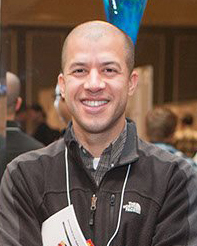Ricardo M. Zayas |

|
|
Associate
Professor of Biology North Life
Sciences 306A |
My
laboratory studies
the molecular and cellular mechanisms underlying tissue
regeneration. To investigate this long-standing biological
problem we examine the process of regeneration in freshwater
planarians. These animals are able to form
entire worms and replace lost body parts from very small body
pieces. Planarians are endowed with a population of adult
pluripotent stem cells (called neoblasts) that serve to replace cells lost during
physiological cell
turnover and after amputation. Thus, planarians provide an
excellent opportunity to explore conserved molecular mechanisms that regulate maintenance, proliferation and differentiation of
stem cells in vivo.
Selected
Publications:
Cowles, M.W., Hubert, A., and Zayas, R.M. (2012). A Lissencephaly-1 homologue is essential for mitotic progression in the planarian Schmidtea mediterranea. Dev. Dyn. 241, 901-910.
Zayas, R.M.,
Cebrià, F., Guo, T., Feng, J., and P. A. Newmark. (2010). The use of
lectins as markers for differentiated secretory cells in planarians. Dev. Dyn. 239, 2888-2897.
Wang, Y., Zayas, R.M., Guo,
T., and Newmark, P.A. (2007). nanos
function is essential for development and regeneration of planarian
germ cells. Proc. Natl.
Acad. Sci. U S A 104,
5901-5906.
Zayas, R.M., Hernandez, A., Habermann, B., Wang, Y., Stary, J.M., and
Newmark, P.A. (2005). The planarian Schmidtea
mediterranea as a model for epigenetic germ cell
specification:
analysis of ESTs from the hermaphroditic strain. Proc. Natl. Acad. Sci.
U S A 102,
18491-18496.
Zayas, R.M., Bold, T.D., and Newmark, P.A. (2005). Spliced-leader
trans-splicing in freshwater planarians. Mol. Biol. Evol. 22, 2048-2054.